The 2021 Ducati Multistrada V4 doesn’t have desmodromic valves. I’ve always thought of “desmo” valves as being pure Ducati — they have been a core feature of Ducati motorcycles for decades.
But since even Ducati seems to be moving away from them in limited circumstances, it’s time I put out an explainer. Because people are asking… wait… What are desmodromic valves?
So here it is — my FAQ on Ducati desmodromic valves. Because I’m explaining it to myself, and because I’m a five-year-old, I’ll explain it as simply as possible. In other words, this is a “Desmodromic valves: explain like I’m five” or ELI5.
I’ll cover these questions about desmo valves:
Are you obsessed with motorcycles?
Well, I am. That’s why I created this site — as an outlet. I love learning and sharing what others might find useful. If you like what you read here, and you’re a fraction as obsessed as I am, you might like to know when I’ve published more. (Check the latest for an idea of what you’ll see.)
What does “desmodromic” mean?
Ducati’s desmodromic valve system is pure magic! It’s voodoo made out of metal and gears!
Actually, “desmodromic” (or “desmo” for short colloquially among motorcycle types) is not magic. Don’t panic. Ducati’s desmo valve system is about as complicated as any valve actuation system in an internal combustion engine, which means “very complicated”. But still, understandable!
Let’s start with the word desmodromic, which is a neologism with roots in Greek.
- In Greek, desmo- is a prefix means a “fibrous connection” or “ligament”; it’s used in words referring to a bond or a chain. It’s not a common prefix other than in medicine.
- In Greek as well, the suffix -drome is related to dromos, referring to running or racing. You might know of an aerodrome for example — these days just an airfield. An older example is hippodrome, a word you might know if you’ve ever visited Rome, which means a horse racing track. (Yes, “hippo” means “horse”, apparently. Close…)
So connected, desmo and dromic is like “linked running” or “connected racing”. It’s a cool word etymologically… but that doesn’t tell you how it operates. In theory, any moving valve system could be described as “desmodromic”.
Even though Ducati is almost synonymous with desmodromic valvetrains, they didn’t invent them (or weren’t the only ones to do so).
Daimler-Benz first patented a desmodromic valve-train system for a V-twin equipped car back in 1889. A string of other manufacturers patented desmodromic designs until Taglioni implemented a design in 1955 in the Ducati 125.
Anyway, the important thing is that desmodromic is a word used to describe how valve trains work. How desmodromic valvetrains work is the next question.
How desmodromic valves work (and how traditional valvetrains work, too)
Valves, in engines, are either to allow fuel to enter, or to allow exhaust fumes to exit. The piston goes up and down, and the valves open and close in a carefully choreographed dance.
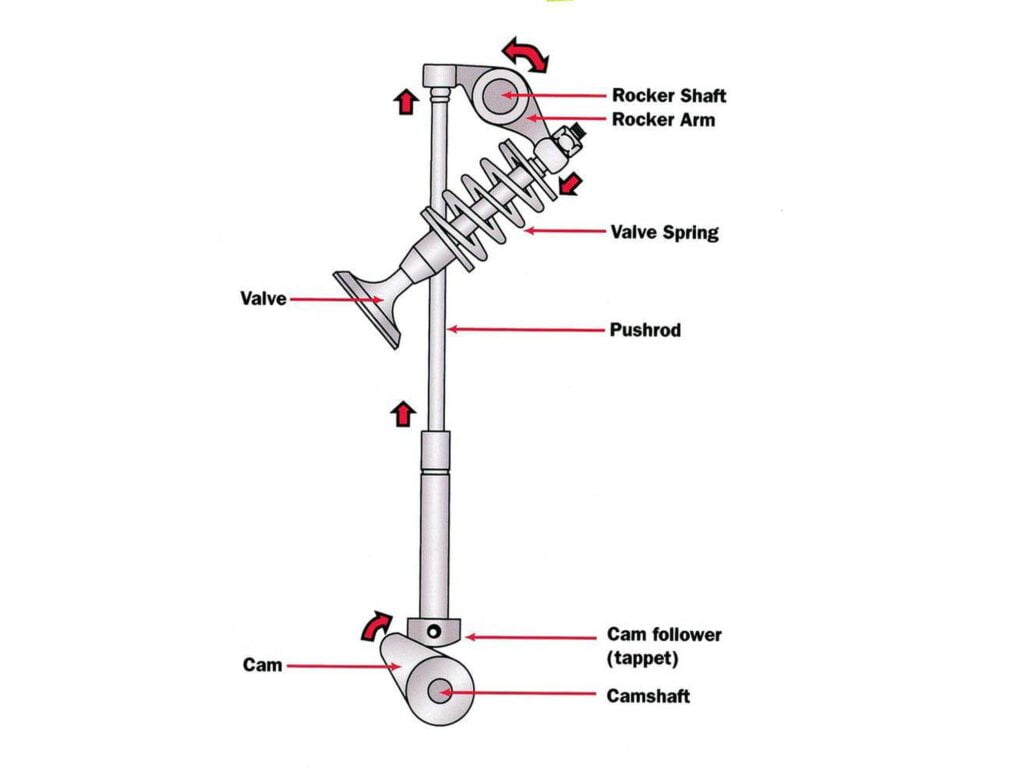
But how do engines know when to let fuel in or let gas out? Well, since it’s all timed relative to the crankshaft, there’s a system in place to open and close the valves in time.
Nearly all engines open valves using cams. A cam (short for camshaft) is a rod with oddly-shaped lobes on it. The lobes spin around and open the valves.
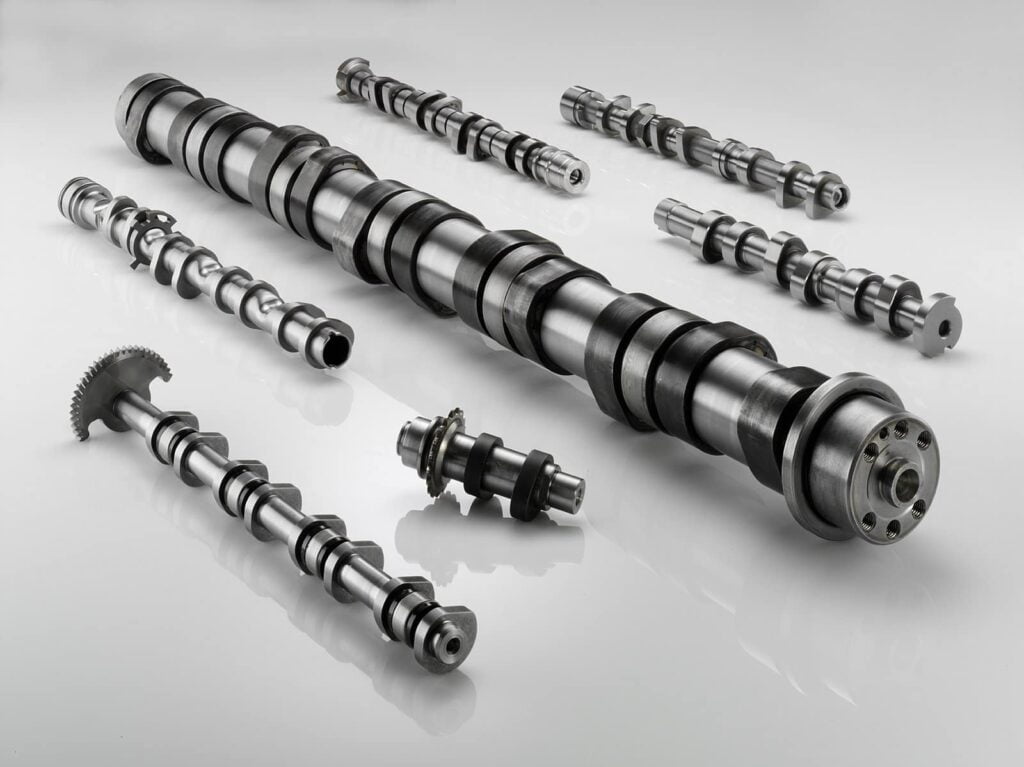
In most overhead camshaft engines, it’s the lobe (the off-centre bit) of the cam that pushes the valve open. It sometimes operates through a rocker arm or on a shim bucket, but still — the cam acts on it directly.
Where most engines differ to desmodromic valve engines is how the valves get closed.
Most engines let valves close themselves using springs. There’s a spring between the valve and head and it pushes the valve shut.
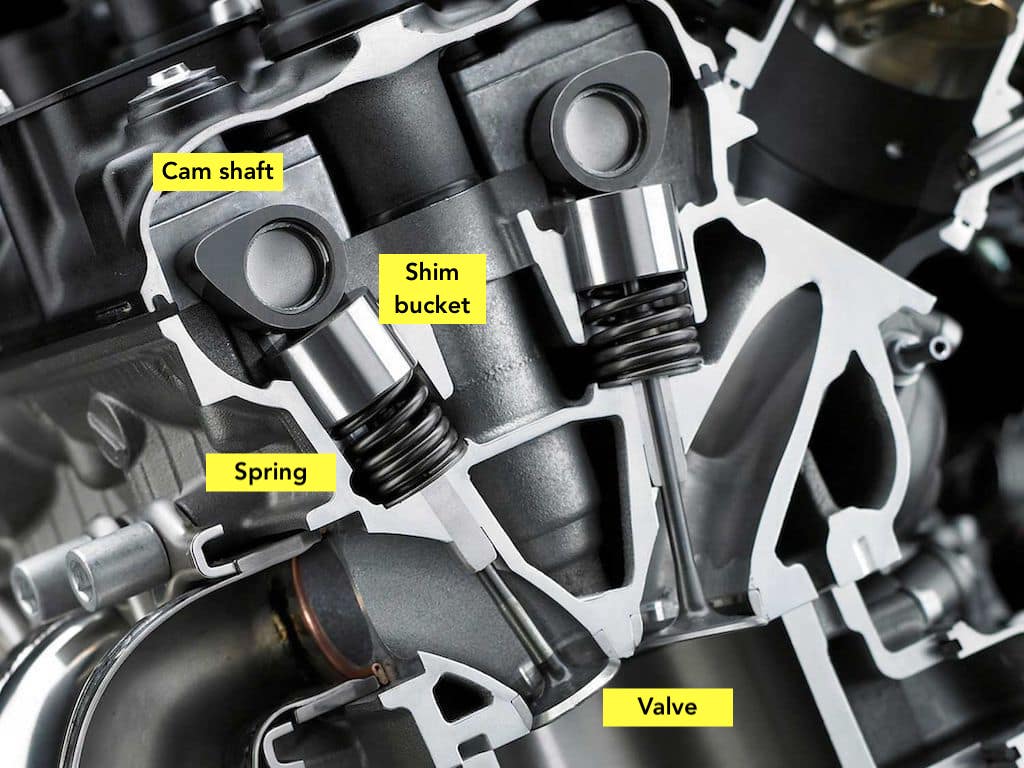
Desmodromic engines close valves with another cam. They use two cams and two actuators, avoiding using a return spring. So one cam pushes the valve open, and another valve pushes it closed.
See the below animation of how cams both open and close valves in a Desmodromic engine, used by Ducati in their promotional materials (courtesy Bluming, Inc, now Miro Design Consulting).
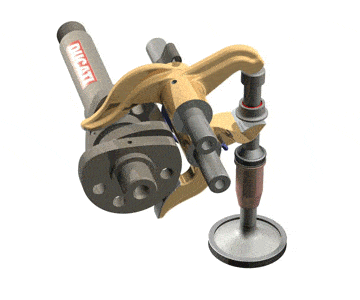
This prevents the problem of spring failure and lets an engine open and closes valves more efficiently, letting engines rev higher (in the past; present-day spring-actuated motorcycles rev plenty high).
Why use desmodromic valves? Are they better?
Ducati started using desmodromic valves in the 1950s because it let them rev their engines higher.
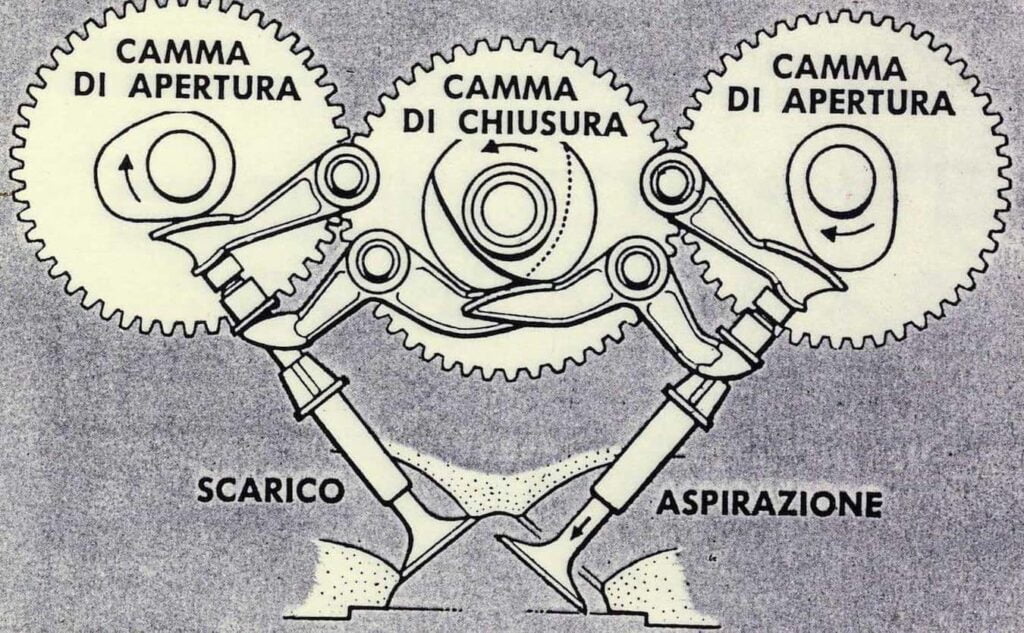
When you rev engines higher and higher, you’re turning the crankshaft (and thus the camshafts) faster and faster. You’re asking the valves to open and then to close faster and faster, too.
If you rely on a cam and spring configuration, then you’re also asking the spring to return the valve quickly enough for the cylinder to be ready for the wrong rotation.
Back in the 50s, the metallurgy simply wasn’t good enough to develop springs that could work that quickly (and reliably). So at high revs, engines would get to a condition called “valve float” — where the valve would never really go home. That’s a natural limit for how high an engine could rev. And it wasn’t that high!
This is why older engines preferred wide gobs of torque to produce power (down low) rather than revving high. It wasn’t until the advent of desmodromic actuation, then better springs, and most recently pneumatic return systems (like in Formula 1 cars).
So, in a nutshell: Desmo valves were originally designed to help engines rev higher. But springs are now good enough.
Are desmo valves hard (or expensive) to service?
The maintenance of desmo engines scares a lot of other people off. The truth is: valve servicing on Ducati motorcycles with desmodromic valves is no more expensive, but it can be more frequently needed.
The word ‘desmodromic’ scares many people away from doing their own valve service. It also lets Ducati mechanics charge more if they want to. It doesn’t need to, and they shouldn’t.
There’s nothing actually very hard about servicing a desmodromic engine. Since it’s only about as complicated as a normal camshaft-driven engine, there’s nothing specifically different.
There are two main differences between desmodromic engines and more common engines with cam + spring drivetrains:
- Desmo engines have twice as many valve clearances to measure (and double the shims to potentially replace), and
- Desmo engines exist on Ducatis, which gives them their own peculiarities.
On the second point — there are more aspects to this.
Firstly, you might have to service Ducati valves more often than non-Ducati motorcycles. An old Monster with a two-valve engine needs to be serviced every 6,000 miles (or 10,000 km). A newer four-valve engine only needs service every 18,600 miles (30,000km), but it’s a more involved job because there are more valves.
But even a new Ducati Scrambler (or a new-ish Ducati Monster 797) has a 2-valve engine that needs servicing every 12,000 km (or 7,500 miles, I guess). So the days of frequent service aren’t over by a long shot!
Secondly, the thing about Ducatis (and KTMs and Aprilias) is that when you do a valve service… there’s nearly always a valve out of spec.
If you ask Yamaha or Kawasaki mechanics about valve service, they’ll often laugh at you. I’ve known people to studiously open up their engines at 30,000, 60,000 and 90,000 kms and find nothing out of spec. After that, they don’t bother.
One Kawasaki mechanic told me he doesn’t even bother inspecting valves unless he hears a noise (or its performing in a way that makes him suspect). They’re just never out of spec. (I don’t think all mechanics are like this. It’s just indicative.)
Would that it were this way with Ducatis. The exact opposite. So much so that it’s good to buy a whole kit of shims before attempting the job.
That said, you can do a Ducati valve inspection and service yourself. I know because I’ve done it, and I’m no mechanical genius! I’ll put a full guide to it soon. There are a few online but I find them all confusing in different ways.
What’s all this about belts and desmodromic valves?
Another thing unique to nearly every Ducati motorcycle until the “Superquadro” era (1199 / 899) is that they use valve belts to drive the valves rather than gears or chains.
Every system has advantages and disadvantages. Gears are great but could wear out (you’ll occasionally hear of some earlier motorcycles having had “chocolate cam gears”). Chains need tensioning (my S1000R had a noisy chain that was best solved with a manual tensioner) and belts need tensioning… and replacing.
The facts that Ducatis use a) desmodromic valvetrains and b) belts to drive the camshafts are related, but they don’t have to be. The Ducati 1199 Panigale, for example, had chain-driven cams and still had desmodromic valves. So did its smaller sibling the 899 Panigale. They kept this in the 1299 Panigale, and then in the Ducati Panigale V4.
Meanwhile, many other motorcycles in the Ducati line-up still use belts.
The main disadvantage of using belts is that they have to be replaced every certain number of kilometres, or years (5 years these days).
In the early days, belts had to be replaced every two years. I believe this was because of the different compounds used in the rubber. Even though guidance is still to change the belts on an old Ducati Monster every 2 years, since the belts are the same shelf item as many more modern motorcycles, changing them every 5 years is fine. That’s what mechanics do for their own bikes (but not for those of customers… not worth the risk!)
So in summary — yes, you have to replace belts, and usually, when you’re doing the valves, it’s time to replace the belts too. But you don’t have to follow the exact guidelines as specified in the manual of your older bike. Easier to change your attitude — changing belts is just another incidental joy of Ducati ownership.
Why does the Multistrada V4 not use desmo valves?
The Multistrada V4 is the first Ducati motorcycle in decades to not use desmodromic valves. So why not use them in the Multi V4?
Well, one number jumped out at me reading about the Ducati — it has a whopping 60,000 kilometre (36,000 miles) major service interval. I nearly swore to myself when I read that! That’s SO LONG!
Before seeing this number, I was always impressed by the long service intervals on modern Japanese motorcycles, typically in the 40-50,000 km range. This one takes the cake.
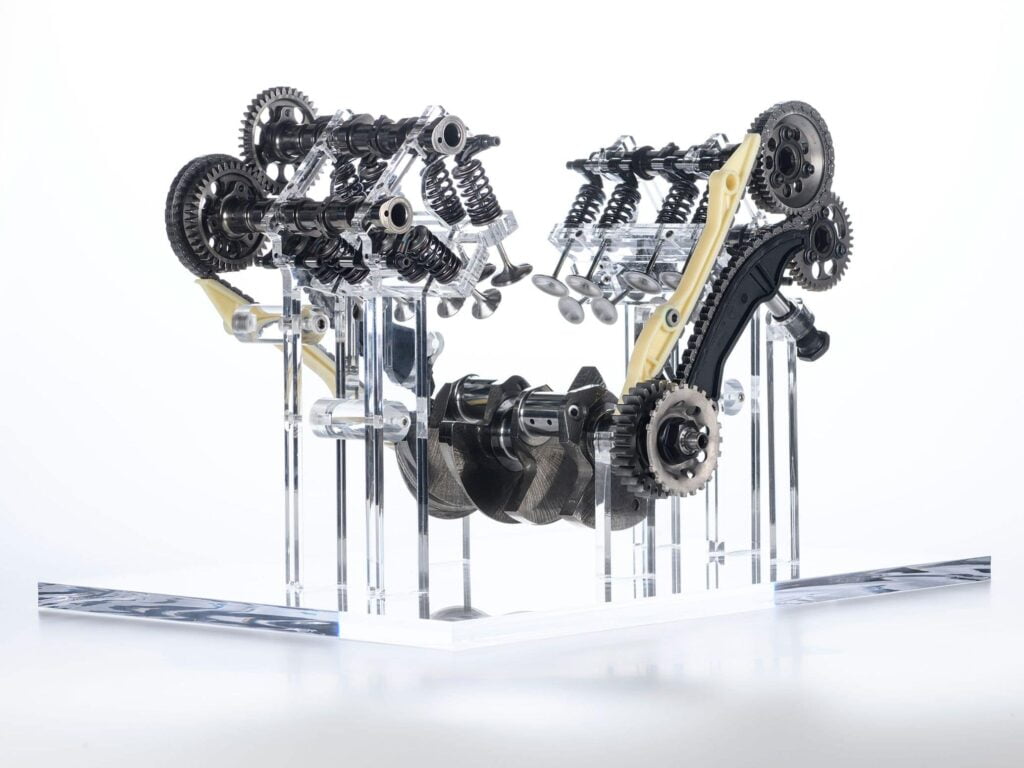
Ducati hasn’t given a specific answer in their press release about why they’ve moved to springs on the Multistrada V4, other than they don’t need the high-revving benefits of the desmodromic valvetrain, and that it helps them get to the very wide maintenance intervals.
So Multistrada V4’s “V4 Granturismo” engine uses a spring valve return system, just as with most modern motorcycles.
As Rider Magazine puts it, desmodromic valve systems had an advantage in high-revving motorcycles in the 1950s, as springs of that era couldn’t withstand sustained high revolutions for long periods of time, resulting in valve float and potential failure.
But thanks to metallurgical advancements, springs can now perform very well at re-seating motorcycle valves — as evidenced by the many high-revving motorcycles with spring return valve systems.
There are still motorcycles with longer valve service intervals — like the Harley-Davidson Sportster S, or indeed most Harley-Davidson or Indian air-cooled motorcycles (plus a few others from Japanese brands), which don’t ever need their valves serviced, due to using hydraulic valve lash adjustment. That’s a topic for another day.



![Ducati MotoE Electric Motorcycle — What We Know So Far [UPDATED] 9 Ducati MotoE Electric Motorcycle — What We Know So Far [UPDATED]](https://motofomo.com/wp-content/uploads/2021/12/Ducati-Electric-motorcycle-MotoE-prototype-2021-768x512.jpeg)
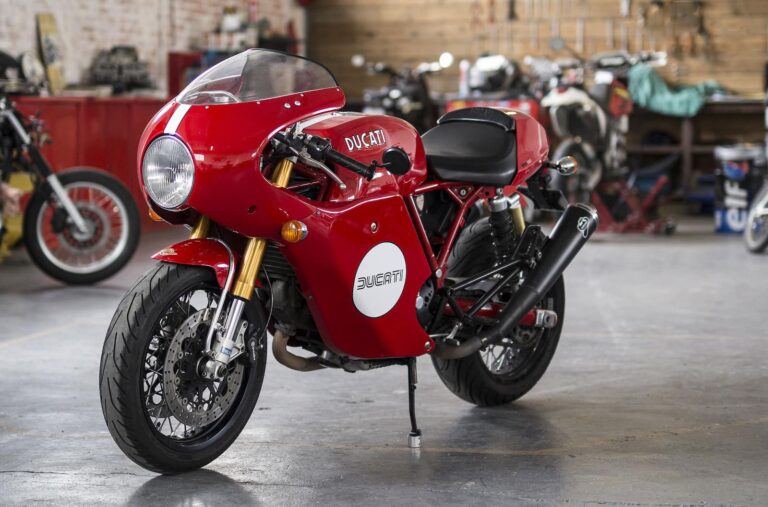
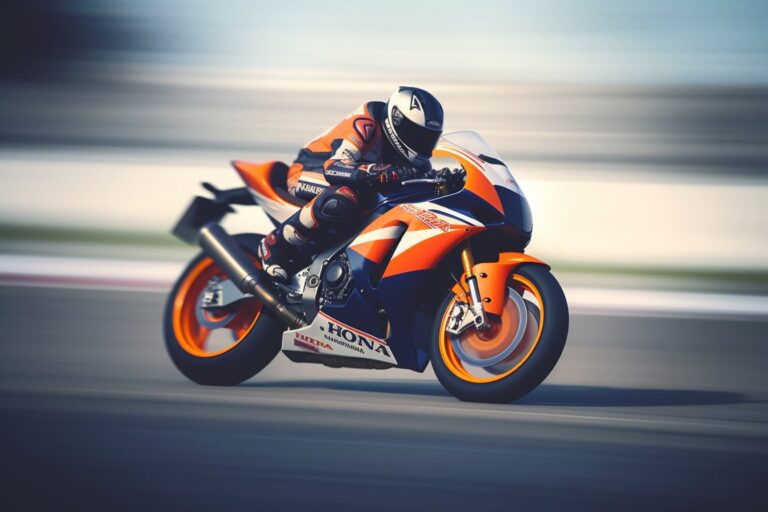
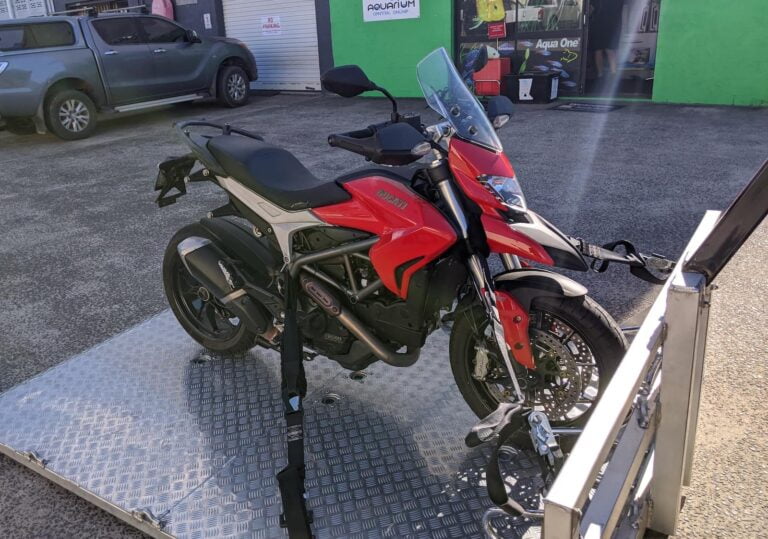
The Duc v4 multistrada most certainly would NOT be classed as having gear driven valvetrain.
It uses normal, long ass stretchy timing chains for each cylinder head, and one cam drives another via gear, as can be observed in the photo.
Multiple timing gears are utilized in place of a timing chain to get rid of the slop, stretch, and inherent lash induced by multiple chain links, and keeps cam timing closer to perfect, longer, under higher stress environments. (see s.b.c. ,rb26, or 2jz timing gear conversions for examples of real gear driven valvetrains)
~wayne, an engine builder in Daytona
You’re a legend. I appreciate the correction, I can’t remember where I got that incorrect info from, but will update it.
I have read many commentaries stating that Ducati Desmodromic valve actuation systems have only one advantage, that of allowing higher RPM from an engine over spring controlled systems and that this advantage has been overcome by metallurgical advances in spring manufacture.
This is a short sighted view. If we discuss “valve events” instead of just simply opening and closing, especially in extremely over square engines such as Ducati’s, then the Desmo system comes into focus for more than one reason.
Depending on camshaft design, short stroke engines, as opposed to long stroke, offer very little time to complete their valve actuation with any real efficiency. To do so using springs to control valve train inertia and valve closure requires less aggressive valve events (opening/closing accelerations and lift/duration) than can be used with a desmo controlled system. Most probably a large contributor as to why we are seeing Ducati engines producing more power and torque per litre than their competitors and additionally the measurable power loss in the new (spring valve) lower revving V4 Multistrada.
Another advantage of Desmo is that there are no velocity variations delivered to the crankshaft via the timing belts/chains/gears as a result of valve spring pressure riding over camshaft lobes.
As with all design features in IC engines, or for that matter any mechanical assembly, there are pros and cons but to say that new tech springs have equaled the Ducati Desmo system is, in my opinion, somewhat short sighted.
Hello sir,
I was wondering if you made the belt change and valve clearance guide. I can’t find it on your page. I want to change my belts and check for my valve clearances, but I’m need of a clear how to. I have the Hypermotard 950 SP and I was inspired by your comment that “anyone” can do these jobs and no technical education is needed. But I’m quite technical and do all of my maintanance of my bike and car myself, excluding very big tasks.
Greetings Dimitri
No, I haven’t finished it, sorry, I realised I should have taken more photos… not sure when I’ll get a desmo engine open again. Thank you Dimitri.
HI Dana that’s great explanation of Desmodromic Valve Operation. When servicing the valves di you use the factory manual for your bike? Do you feel the instructions there are adequate? Thanks.
Sorry I didn’t… I followed the guidance of a mechanic teaching me. I would use the modern combination of the shop manual + Googling + YouTube! You have no idea how many YouTube videos of valve adjustments I’ve watched for various bikes. (Well not that many… but dozens)